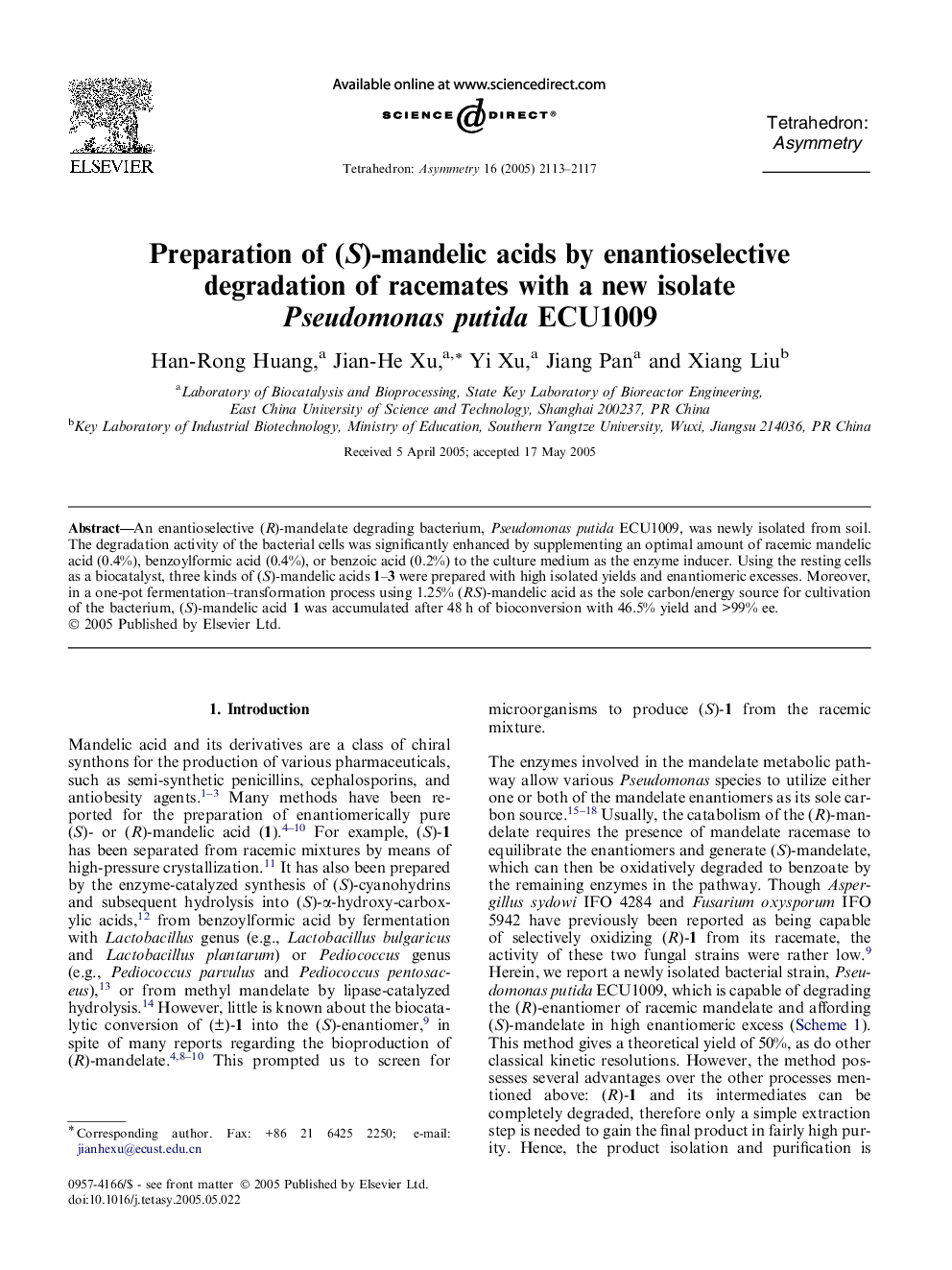| Article ID | Journal | Published Year | Pages | File Type |
|---|---|---|---|---|
| 1346112 | Tetrahedron: Asymmetry | 2005 | 5 Pages |
An enantioselective (R)-mandelate degrading bacterium, Pseudomonas putida ECU1009, was newly isolated from soil. The degradation activity of the bacterial cells was significantly enhanced by supplementing an optimal amount of racemic mandelic acid (0.4%), benzoylformic acid (0.4%), or benzoic acid (0.2%) to the culture medium as the enzyme inducer. Using the resting cells as a biocatalyst, three kinds of (S)-mandelic acids 1–3 were prepared with high isolated yields and enantiomeric excesses. Moreover, in a one-pot fermentation–transformation process using 1.25% (RS)-mandelic acid as the sole carbon/energy source for cultivation of the bacterium, (S)-mandelic acid 1 was accumulated after 48 h of bioconversion with 46.5% yield and >99% ee.
Graphical abstractFigure optionsDownload full-size imageDownload as PowerPoint slide
(S)-(+)-Mandelic acidC8H8O3Ee >99%[α]D25=+152.0 (c 1.0, H2O)Source for chirality: enantioselective degradationAbsolute configuration: S
